By: Brent Parrish
The Right Planet
The Right Planet
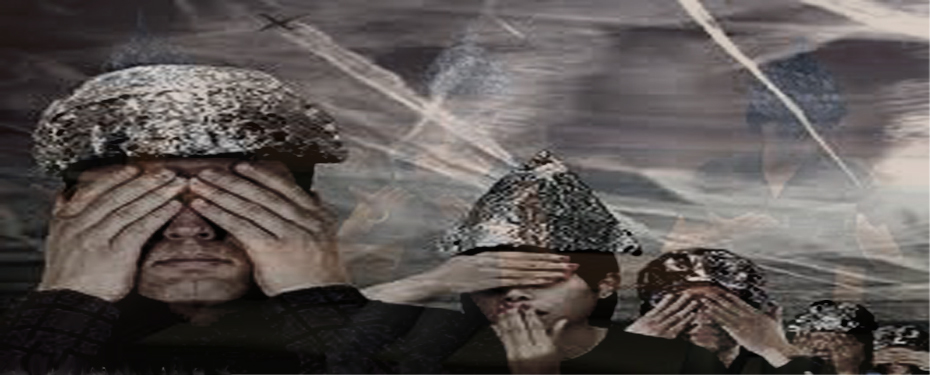
There probably is not a more loaded word these days than
“conspiracy.” So often I hear people who may believe something nefarious
might be going on anxiously qualify their position by insisting they
are not a “conspiracy theorist.” And I completely understand the
sentiment. Let’s face it, there are a lot of crackpot theories going
around on numerous issues these days. So much so, the word conspiracy evokes an almost Pavlovian reaction in many people.
But just what is a conspiracy? It’s simply the act of two or more
people agreeing to commit an illegal or immoral act. Conspiracies happen
all the time—both big and small. The trick is to determine if it really
is a conspiracy or not. And often times, the bigger the conspiracy, the
harder it is to prove.
One of the greatest conspiracies of all time, in my opinion, is
communism itself. Oh, and that’s not just my opinion. Conspiracy is one
of the essential parts of communism, as I hope to point out in this
article. Once again, this is not just my opinion, it comes straight from the communists themselves.
In my own experience, quite a few people I have encountered really
have no idea what communism is all about. They might know the history of
communism, but they often times don’t understand or grasp the ideology
behind it. And let’s face it, the mere mention of the word communism is
enough to make some people look at their watch and say, “Well, I better
get going now.” The reaction is similar to when one uses the word
“conspiracy.”
Another reason I believe a number of people glaze over when the
subject of communism is brought is up is due to the dangerously
misguided belief communism was defeated when the Berlin Wall
came down. But the fact of the matter is one out of every five people
on earth still lives under an oppressive communist regime. The countries
that are still communist are:
- China
- Laos
- Cuba
- Vietnam
- North Korea
Of course, I would still consider the regime in Russia as communist.
Furthermore, the above list only includes regimes openly identifying
themselves as communist. Most of South America and Africa are ruled by leftist regimes who embrace some form of socialism. (Brazil just elected a former communist terrorist for president.) And the ideological foundation of the European Union has been called Eurocommunism. Soviet dissident Vladimir Bukovsky has described the EU as a “pale version of the Soviet Union.”
Communist regimes have killed more than 100 million people worldwide
in the 20th Century alone. And I would venture to say, that is a
conservative estimate. So how can one think communism does not still
pose a grave and ominous threat to all of humanity? It seems one must
suspend all logic and reason to come to such a conclusion. This is why I
feel so strongly that it is of paramount importance freedom-loving
people understand the ideology and political goals behind communism and
its implementation.
Naturally, it is not easy to boil a massive subject like communism
down to a nutshell. But I have been studying the subject matter for
several years know, and I’m going to attempt to do just that—boil some
things down to a nutshell.
Most communist leaders rarely invoke the term communism. Instead,
they talk of socialism. Remember, the USSR stood for the Union of
Soviet Socialist Republics. Stalin almost always referred to communism
as socialism, as have many other communist leaders.
Granted, there is a fair amount of debate between scholars and
historians on how socialism and communism differ. But many of these
perceived differences are merely academic. In practice, there is very
little difference between socialism and communism. But there are some
things worth mentioning concerning the differences between socialism and
communism.
One of the more concise definitions on the differences between socialism and communism, that I have heard is “a communist is a socialist in a hurry.” Others have stated, “A communist is someone who is not afraid to pull the trigger.” Vladimir Ulyanov (Lenin) is quoted as saying, “Socialism is the road to communism.”
Of course, there would be no communism without Marxism. The
economic, social and cultural theories of Karl Marx and Friedrich Engels
form the ideological foundation of communism, i.e. socialism.
But Marx was a theoretician, not a practitioner of socialism, per se. It
was Vladimir Ilyich Lenin who first put the theories of Marx &
Engels into practice—referred to as Marxism-Leninism.
Interestingly, about ninety-percent of what Karl Marx wrote solely concerned economics, as evidenced by his seminal work Das Kapital—which coined the term “capitalism.” (From the best I can gather, the term capitalism
was not used in the United States until the latter part of the 19th
Century.) But it was Marx’s call for “revolutionary struggle,” as
outlined in the Communist Manifesto (published in 1848), that so captured the imaginations of many radicals at the time—and to the present day.
The entire premise of the Communist Manifesto rests upon the notion of “class struggle.” This is immediately evident when one reads the introductory lines of the Manifesto:
The history of all hitherto existing society is the history of class struggles.
Freeman and slave, patrician and plebeian, lord and serf, guild-master and journeyman, in a word, oppressor and oppressed, stood in constant opposition to one another…
The concept of oppressor-oppressed lies at the heart of Marxian socialism—us versus them. The oppressor-oppressed model is prevalent in today’s political landscape, as is the notion of “class struggle”—rich vs. poor (see 1% vs. 99%), the haves vs. the have nots, the capitalist vs. the worker, the bourgeoisie vs. the proletariat, and so on. Most Americans have been subjected to class rhetoric all of their lives—lower-class, middle-class, upper-class … blue collar vs. white collar, etc.
Some modern-day Marxists and their fellow travelers (sympathizers)
have expanded upon the oppressor-oppressed dynamic. A good example would
be the godfather of “community organizing,” Saul Alinsky. Alinsky added
yet another division to the mix: “the have some, want mores.” So now we have the haves (rich) vs. the have some, want mores (middle-class) vs. the have nots (poor), according to Alinsky.
It is important to note, that in the eyes of a Marxian socialist, the middle-class and upper-class represent the “petty bourgeoisie,” as Dr. Carroll Quigly disparagingly refers to the them in his mammoth work Tragedy and Hope.
The middle and upper classes are the economic engine of the United
States. But socialism-communism wishes to control the means of
production and distribution. In order to control production, one must
control the producer–meaning, the individual. Individualism must be
wiped out in order to create a true socialistic system, whereby the
state will provide the individual with all of their emotional, spiritual
and physical needs.
If I were to boil the Communist Manifesto down to its essence, it would be the abolition of private property. And if I were to reduce Marxism down to just one word, it would be sameness.
We all will think alike, earn alike, live alike, work alike, dress
alike … there will be no flavor for our fare, only sameness … a gray,
dreary sameness. And all of this is sold to “the masses“ with lovable
slogans like “unity in diversity” and “equality and fairness” and “progress and change.” Sound familiar? Once again, the more things change, the more they stay the same.
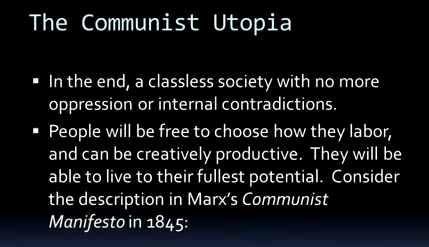
(Screencap credit: Yuri Maltsev)
There is another important point to consider regarding Marx’s theory of a “dictatorship of the proletariat” as outlined in the Communist Manifesto.
Communism is a utopia. It does not exist. The theory is the state will
eventually “wither away” to nothing. And this will bring in the long
awaited “workers’ paradise.” But this is all to occur sometime in the
distant future. Soviet defector Yuri Maltsev has explained these
concepts in greater depth in some videos I’ve posted here at the blog
(see here and here).
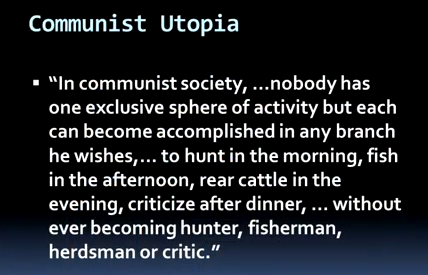
(Screencap credit: Yuri Maltsev)
But before the long hoped for communist utopia can be realized (where
every whim and need will be realized for all the “workers”), nations
must be wiped out. This is what is referred to as the “transitional
stage.” Many scholars have commented that this part of the Manifesto
is not very well thought out. It is analogous to a person who does not
like their house, so they decide to burn it down with themselves still
in it. It is almost a juvenile belief that from the ashes will arise
some great, new utopia the embodies perfect fairness and equality.
Joseph Stalin said the Communist Party must originally be destructive. –
See more at:
http://www.therightplanet.com/2014/12/a-world-conspiracy/#sthash.ESixsPSO.dpuf
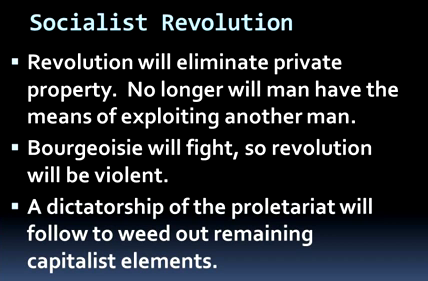
(Screencap credit: Yuri Maltsev)
So, at this point, I would like to start breaking down how communism
is organized and implemented. I am going to refer to the lessons and
experiences of ex-communists. Two of the sources I will be drawing from
are Dr. Bella V. Dodd (19o4 – 1969) and Mike Vanderboegh (who claims he was the one who first broke the Fast and Furious story). Both are ex-communists who turned vocal anti-communists.
Bella Dodd points out there are three terms that are important to
differentiate concerning communism—meaning: the Communist Conspiracy
(world conspiracy), the Communist Party and the Communist Movement.
These are three different concepts, and each one must be dealt with
differently.
The Communist Conspiracy
The communist conspiracy should really not have the word communist
before it, for it is a conspiracy for world control, according to Dr.
Bella Dodd.
What is it that the world conspiracy hopes to accomplish?
The world conspiracy compromises a small group of elites located in
New York City, Chicago, San Francisco, Paris, London, Moscow, Hong Kong,
etc. Dodd points out that they are a determined group who wish to
control the resources of the world. They wish to control all of the
world’s natural resources—oil, iron, steel, tin, uranium, timber, and
the land itself. (Dodd mentions the late Freddie Fields
of Vanderbilt Steel, a card-carrying communist.) In order to control
all the natural resources of the world, one must control all the people
of the world—all seven billion of them.
Dodd points out that this leads to a rather strange phenomenon—one
that confuses many Americans, since they believe that those who would be
interested in business and industry would stand staunchly against
communism. But the world conspiracy is compromised of many different and
disparate groups and individuals.
The world conspiracy operates under different labels at different
times: communism, socialism, humanism, goodwill, global governance,
internationalism, globalism, economic democracy, industrial democracy,
social democracy, and so on—whatever it takes to move people to mass
action.
Mike Vanderboegh, a former card-carrying communist, explains it is all just collectivism
at the end of the day. Whether one wishes to call it nazism, communism,
socialism, fascism, progressivism, liberalism, nativism, tribalism,
racism—ism, ism, ism—everything is in service to the collective.
One of the main goals of communism is to divide the people. When
people are busy fighting amongst themselves, they are unable to organize
and form an effective opposition. This is where all the class struggle
and oppressed-oppressor rhetoric comes into play. And, unfortunately,
the tactic has proved wildly successful. So much so, that even
communists themselves have been astonished at how effective the tactic
of pitting one group against the other has proven to be.
The communist conspiracy has a secret and a public face. Communists
are taught to lie; they are masters of the “language of the lie.”
Shrouding their true intentions in lovable labels and slogans (semantic
manipulation, as the KGB/FSB
calls it) is what communists do best. Examples include phrases like
“sustainability,” “economic justice,” “environmental justice,” “global
citizenship,” “assault weapons,” “gun control,” “white privilege,”
“diversity,” “climate change,” “agents of change,” “progress,”
“progressive,” etc.
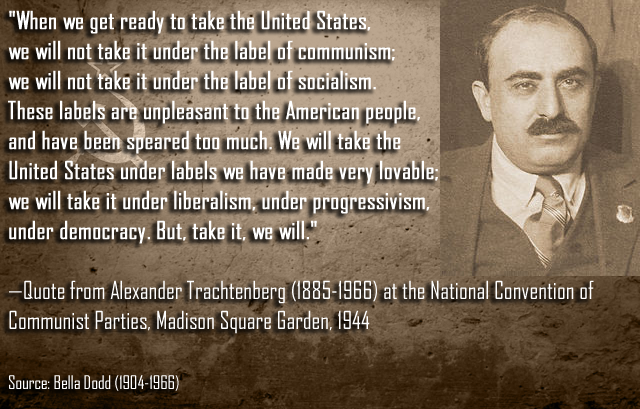
“If you’ve got the language up front, you’ve already won the debate …
They suck you into their worldview,” says Mike Vanderboegh.
The party teaches to never use an outright lie. Instead, communists employ disinformation (Soviet term) to agitate honest grievances. In a similar vein, Saul Alinsky taught, “Rub raw the resentments of the people.”
Mike Vanderboegh explains, “They [the party] take a kernel of truth
and wrap it in a lie … packaged so credulous people will pass it on to
other credulous people to influence their behavior to go in a certain
way.”
There were less than 20,000 Bolsheviks in Russia during the 1917 October revolution
who managed to wrest hegemony and control over 200 million Russian
citizens, adding credence to the adage that “the organized minority will
beat out the unorganized mob every time.”
The communist conspiracy has many different channels of offerings, but it all works toward the same goal: world control.
The Communist Party
The original Communist Party was founded in 1912 by the Bolsheviks,
the majority faction of the Russian Social Democratic Labor Party—a
group of revolutionaries led by Vladimir I. Lenin. (Bolshevik means
“majority” in Russian.)
In 1919, the Communist International (Comintern for short), also
known as the Third International, was initiated in Moscow. In the same
year, the Communist Party USA was founded in the United States. The
Comintern was an international communist organization
whose goal was to fight “by all available means, including armed force,
for the overthrow of the international bourgeoisie and for the creation
of an international Soviet republic as a transition stage to the
complete abolition of the State.”
The Communist Party was established as a blueprint and framework for a
future world government. Communist parties (sometimes referred to as
the Labor Party or Socialist Labor Party) were established in every
nation of the world. Communist parties established internationally were,
in effect, skeletons for a future government, not a political party.
The party focuses on politics, economics, social issues—and is
particularly interested in the educational systems, and in the cultural
life of the people. The party concerns itself with the “morality of the
people,” but only for the sake of expediency. The party makes it a point
to be out front on any social ill or injustice. But strictly for the
purpose of gaining control, and for the ear of the people.
Within the party, members are judged on their “ideological purity.”
Mike Vanderboegh describes the levels of “purity” as follows:
“There are radishes, tomatoes and killer tomatoes. A radish (negative term) is a party member who is red on the outside but white on the inside. A tomato is a party member who is red through and through. But a killer tomato is a communist who is willing to pull the trigger.”
There really isn’t a lot of difference between a radical
revolutionary and a religious zealot. (Note: I’m not disparaging
religion, per se, but rather fanaticism.) A true revolutionary
devotes themselves to the struggle much like a religious zealot devotes
themselves to their religion. Marxian socialism is a religion in its own
right—a faith, albeit one marked by fanatical, atheistic fervor.
Nothing comes before the cause, i.e. “the struggle.” Nothing. The
precepts of the Marxian faith are well spelled out in Cleon Skousen’s
book The Naked Communist.
The Communist Movement
The purpose of the communist movement is to establish a social and
ideological attitude that is pro-left. It comes to the people through
very pleasing devices.
Communism in the U.S dates back to before and after the Civil War
when Karl Marx visited the States. Marx lectured in New York City,
Philadelphia and Boston. He even corresponded with the 16th President of the United States, Abraham Lincoln. The First International (First Comintern) was disbanded at the Philadelphia Conference in July 1876.
The Communist Movement on a worldwide basis does different things at
different times. Communists will do everything they can to unleash
confusion, chaos, depravity, perversion, conflict—parent vs. child,
black vs. white, gay vs. straight, one religion vs. the other, man vs.
woman, etc., etc.
Promising members within the Communist Party were often sent to Lenin’s Institute for Higher Learning,
where they were taught such things as racial agitation, trade union
building, every facet of Russian history (apparently the Russian
communists are rather “patriotic,” cf. irony), small arms training and guerrilla tactics.
Inflaming minds on a racial
and ethnic basis has proved to be one of the most effective tactics for
the communists to divide people and create conflict. (Sound familiar?)
Gaining complete dominance over media, entertainment and educational systems (see Common Core)
is of intense importance to the communists, for these institutions and
power centers have proven to be the most effective way to divide the
people and forward the party agenda.
Dr. Bella Dodd believed there weren’t but a dozen universities that
deserved the name “university.” All the others were simply institutions
of indoctrination, moving people in a direction the elites wanted them
to go. The purpose of these indoctrination centers is to demoralize
students, creating within them a feeling of alienation with everything
and everyone around them, particularly with their biological families.
Communists strive to make people ashamed, dissatisfied and unhappy
with their country, for they eschew the very notion of national
sovereignty and patriotism, since communism employs “radical social
change” to move the world toward a “classless, borderless” society. This
is why communists often refer to themselves as “citizens of the world,”
and not proud citizens of their respective countries. (By the way,
Barack Obama considers himself a “citizen of the world.”)
While the press is willing to expose the horrific crimes of Adolf Hitler
(and rightly so), they have steadfastly refused to report on the
monstrous crimes committed by communist regimes, such as the former
Soviet Union and Red China, where mass killings occurred on an
industrial scale. The astonishing brutality and barbarism employed by
communist regimes is unlike anything that has ever been seen in the
history of humanity.
For example, according to Bella Dodd, in North Korea, a million men
were transported to Inner Mongolia because the “Korean type” was not a
“type” the communists wanted to procreate. The communists decided they
were the ones who will decide which nation shall exist, and which
“racial stock” should be promoted.
Dodd claims the same forces that moved Communist development also
moved fascist development. Communism enthrones the proletariat, the
common man. Fascism enthroned the state.
The communist movement is not one monolithic block, but operates under many labels, i.e. organizations. The communist theory of change revolves around creating conflict.
This is born out of the theory of dialectical materialism that states
all progress is brought about by conflict. They will often create an
organization for the sole purpose of creating conflict. If there is no
conflict, they engender conflict in order to move public opinion to the
left, in the direction of communism. They will create a right in order
have people oppose it so they will be pulled toward the left. This is
the notion of “controlled opposition.” Vladimir Lenin once said, “The best way to control the opposition is to lead it ourselves.”
From my own research into the origins of communist ideology, I have
run up against some rather astonishing and incredibly disturbing claims
and allegations. There is a real “heart of darkness” that lies at the
center of all this. I can’t fully explain it at this point. I just don’t
have enough verifiable and concrete information. But I have been coming
to the rather startling conclusion that is something quite sinister
that seems to be above communism itself.
In Cleon Skousen’s book The Naked Capitalist (1970), which is a critique of Dr. Carroll Quigly’s book Tragedy and Hope,
Chapter One includes a rather sobering quote from Dr. Bella Dodd. When I
first read the quote, I about fell out of my chair, because it
corroborates a lot of related research I have done over the years. But I
just didn’t want to believe it was true. It just seemed too incredible …
like a bunch of crackpot nonsense. But I’m not so sure now. So, I’ll
leave the reader with this excerpt from Chapter One of Skousen’s book,
and the reader can make up their own mind.
“I think the Communist conspiracy is merely a branch of a much bigger conspiracy!”
The above statement was made to this reviewer [Cleon Skousen] several years ago by Dr. Bella Dodd, a former member of the National Committee of the U.S. Communist Party.
Perhaps this is an appropriate introduction to a review of Dr. Carroll Quigley’s book,
Tragedy And Hope.
Dr. Dodd said she first became aware of some mysterious super-leadership right after World War II when the U.S. Communist Party had difficulty getting instructions from Moscow on several vital matters requiring immediate attention. The American Communist hierarchy was told that any time they had an emergency of this kind they should contact any one of three designated persons at the Waldorf Towers. Dr. Dodd noted that whenever the Party obtained instructions from any of these three men, Moscow always ratified them.
What puzzled Dr. Dodd was the fact that not one of these three contacts was a Russian. Nor were any of them Communists. In fact, all three were extremely wealthy American capitalists!
Dr. Dodd said, “I would certainly like to find out who is really running things.”
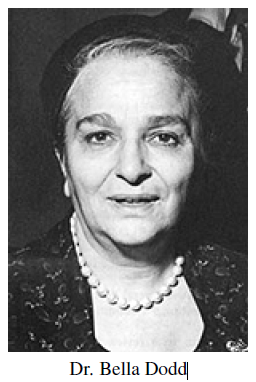
No hay comentarios:
Publicar un comentario